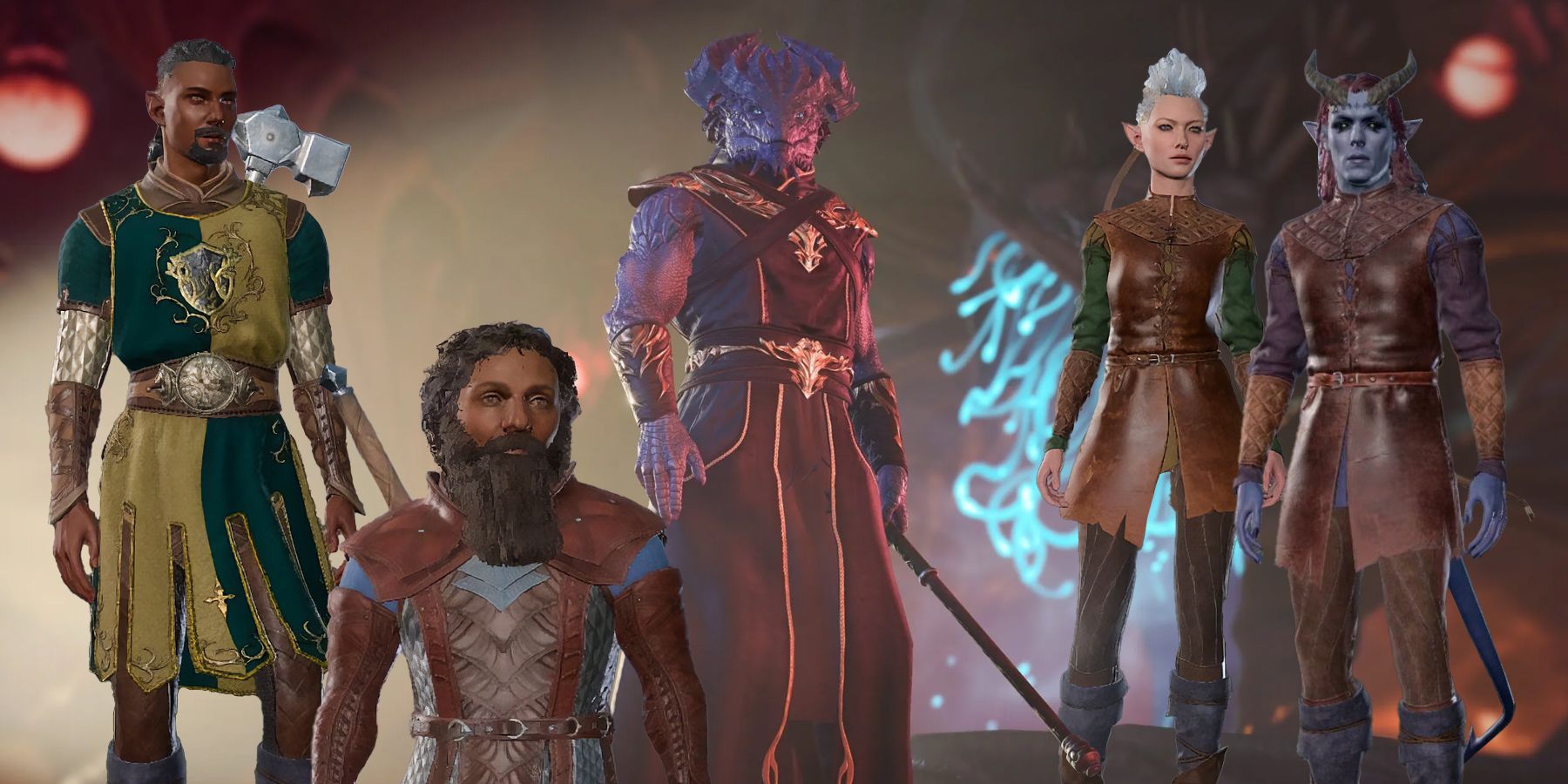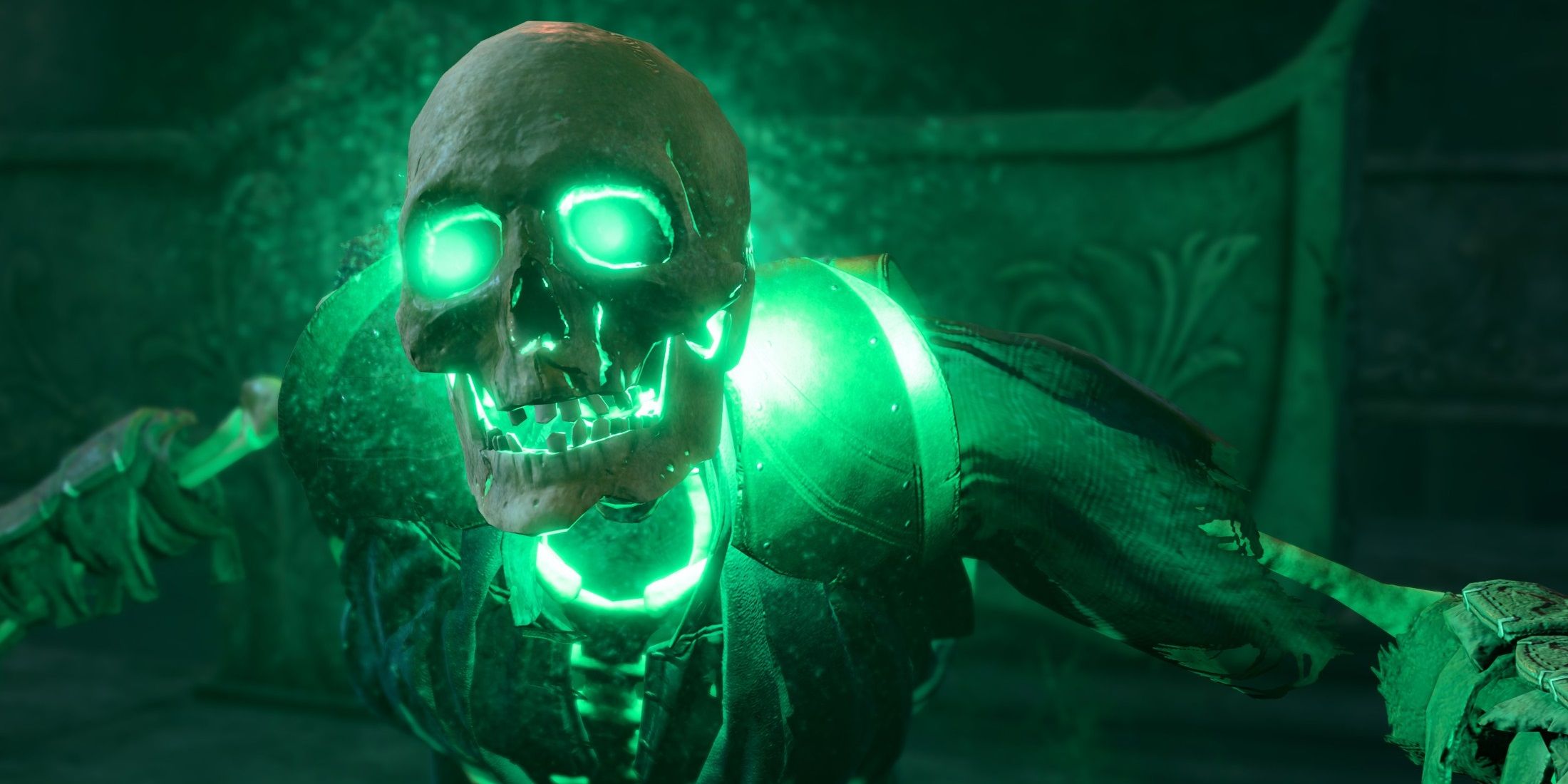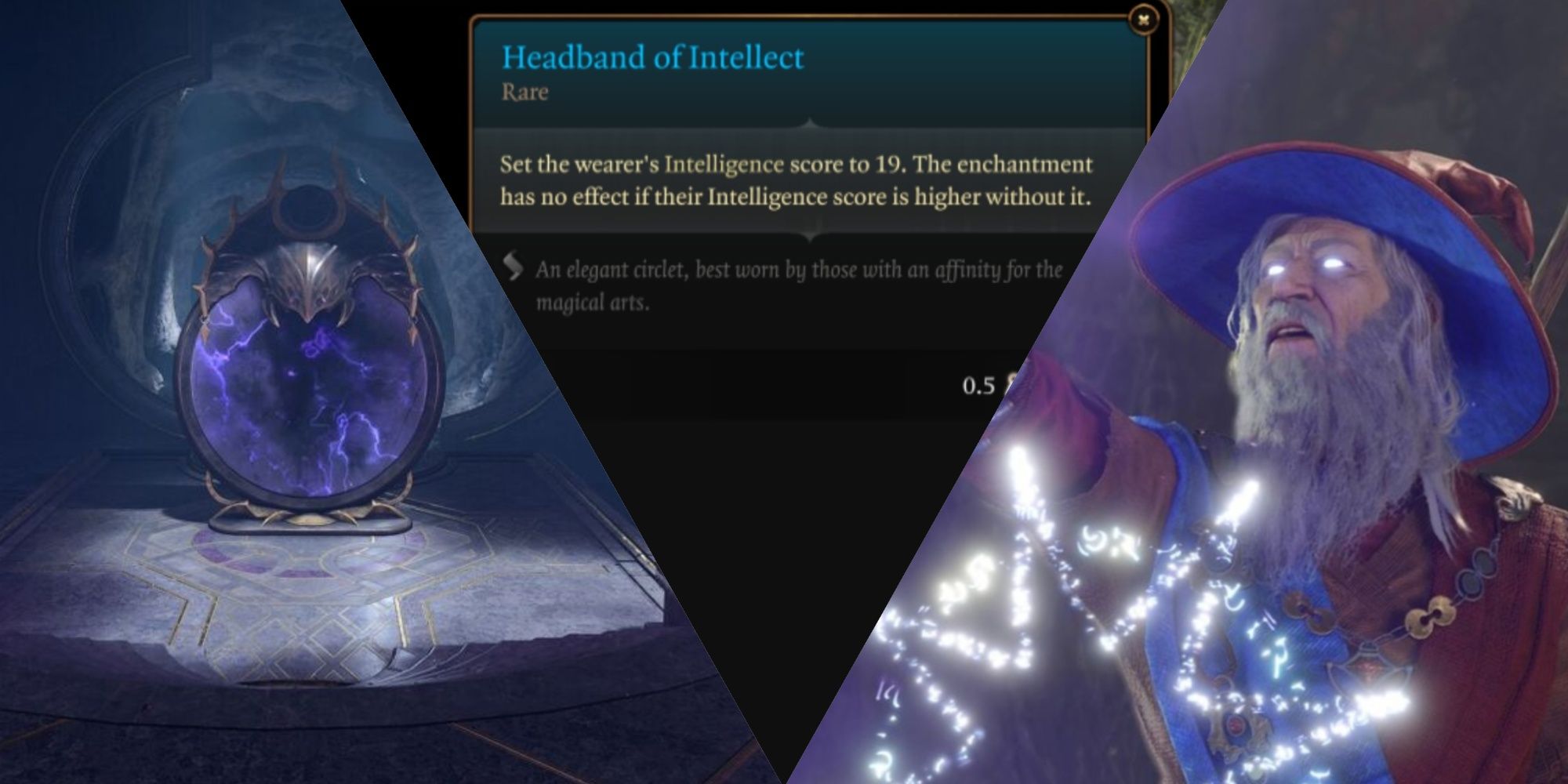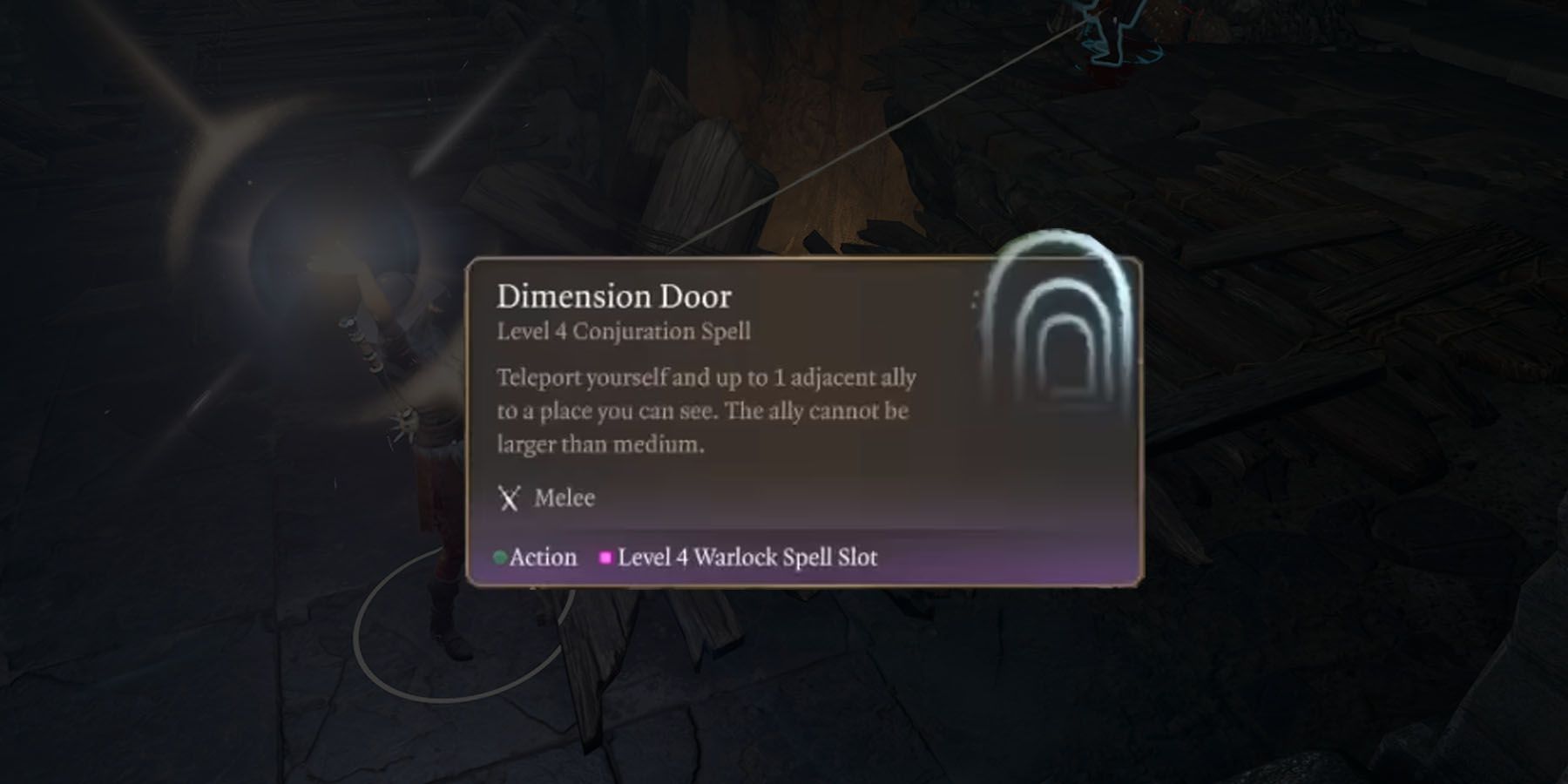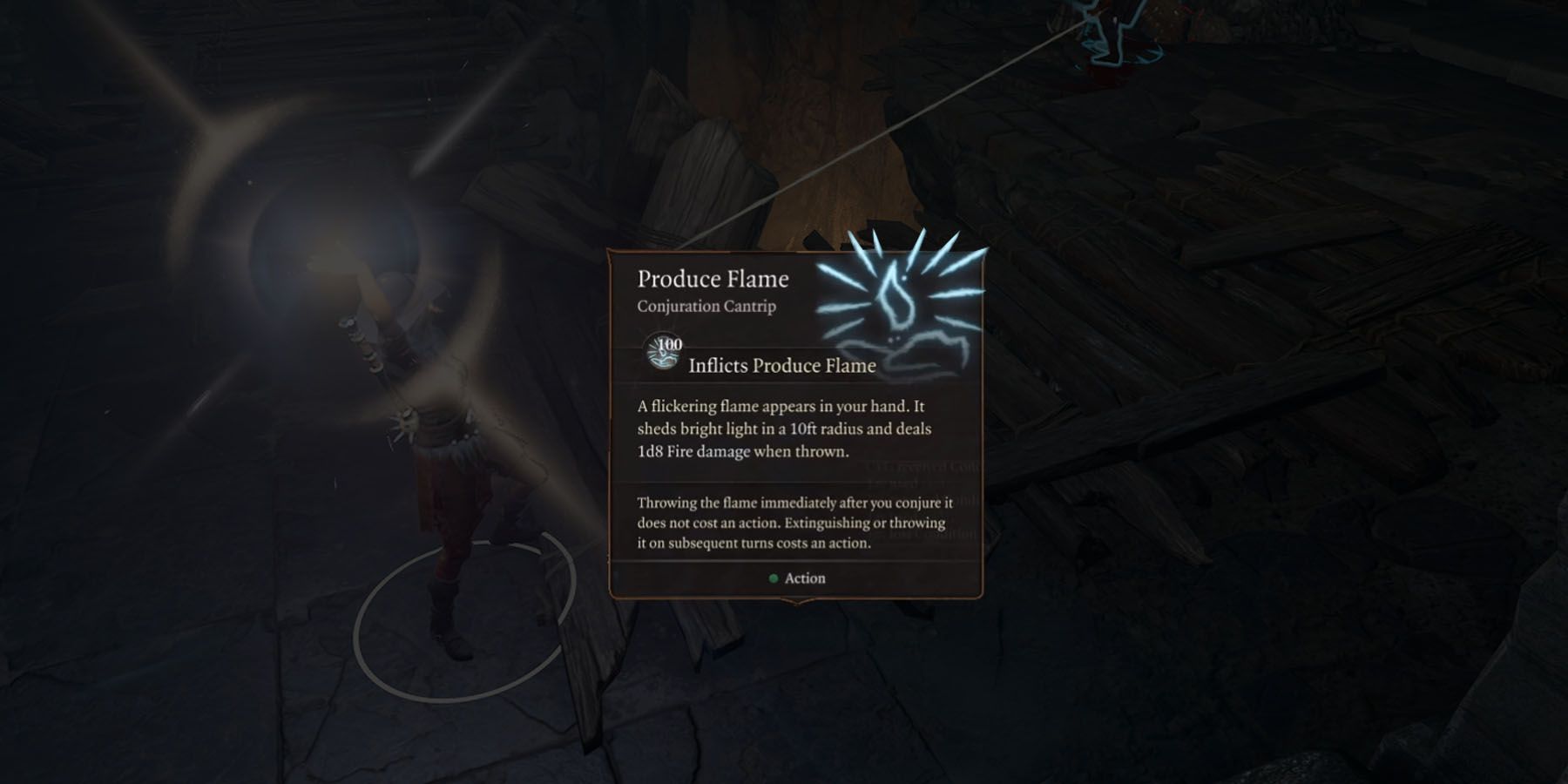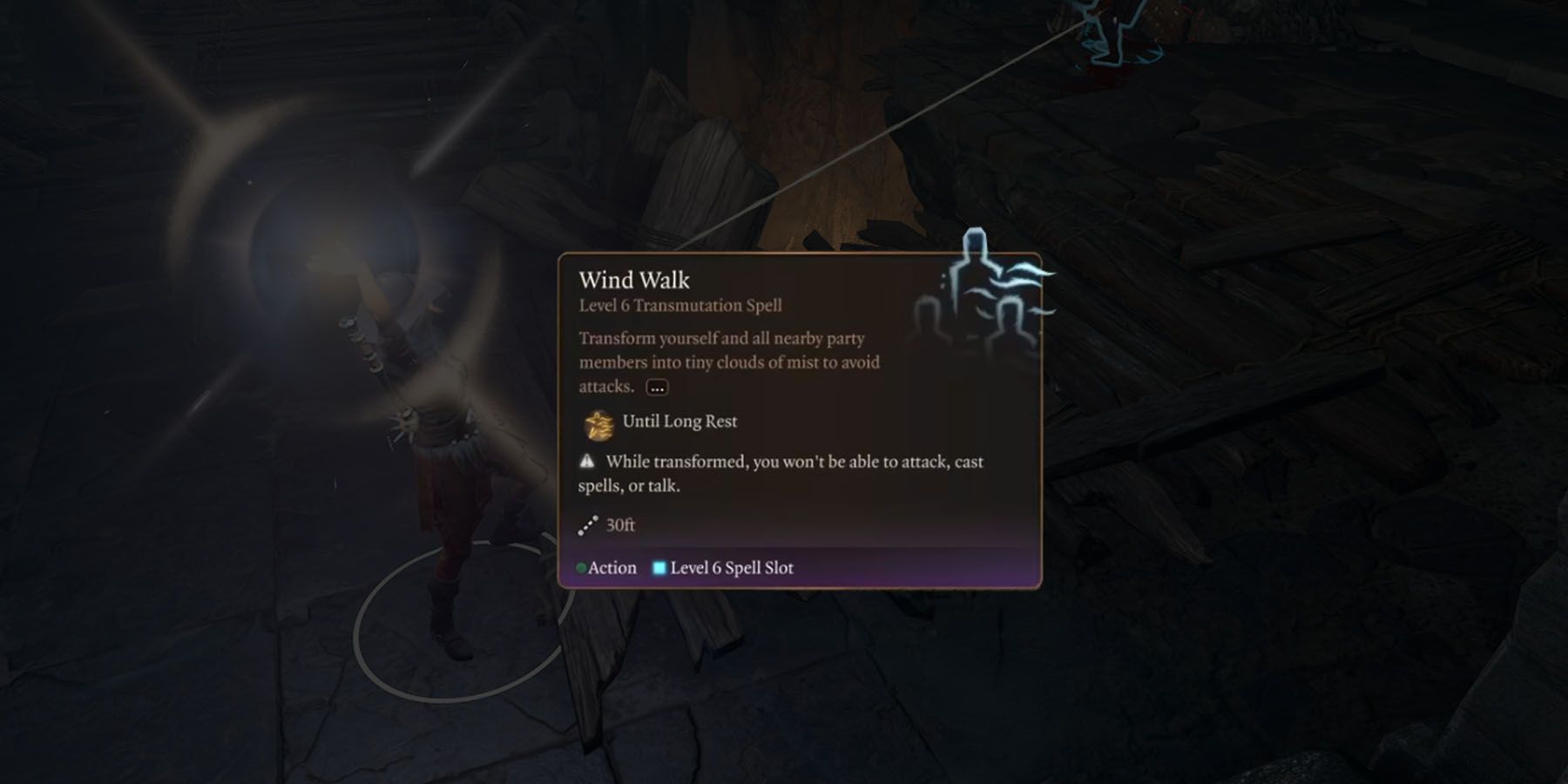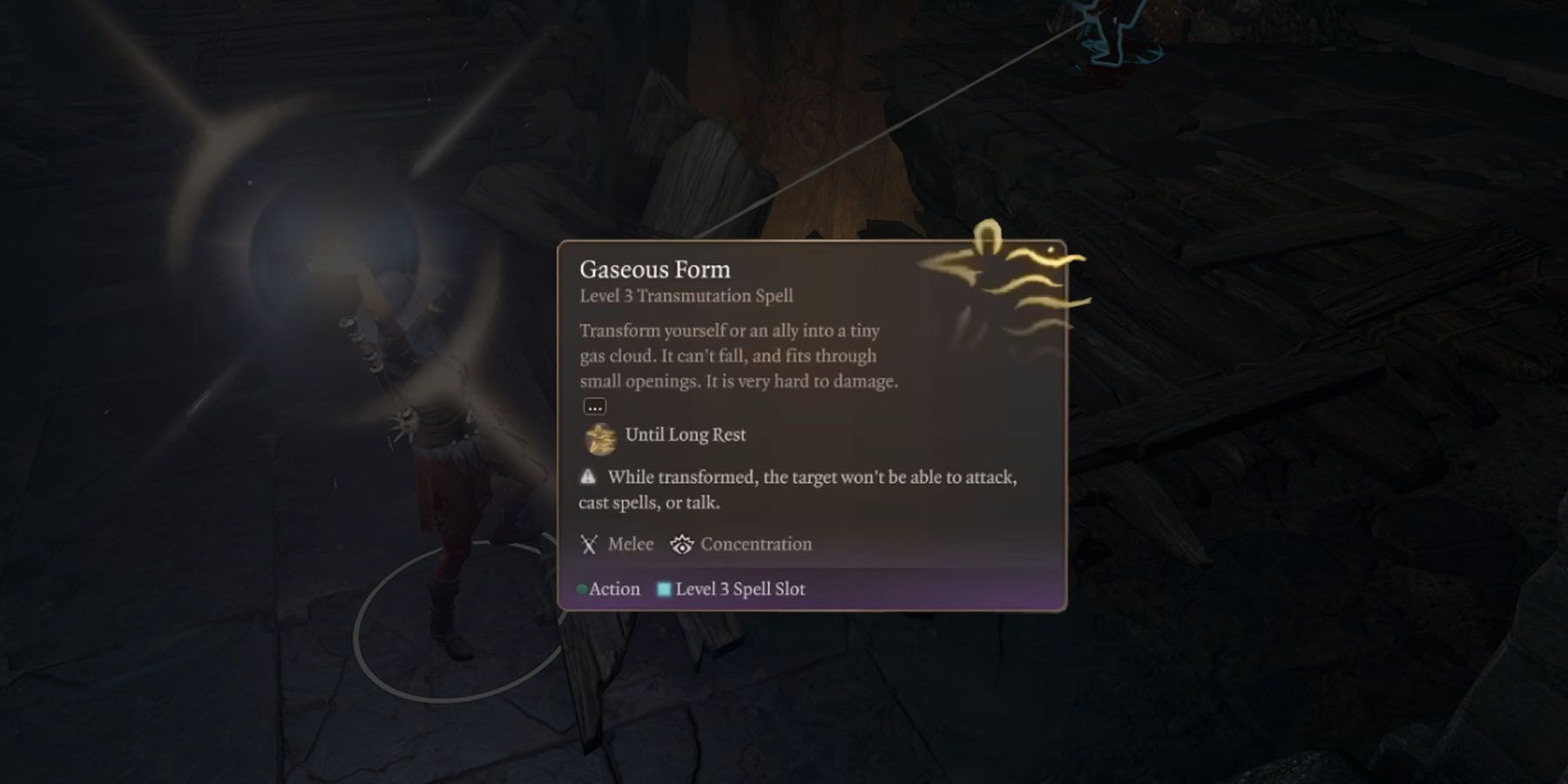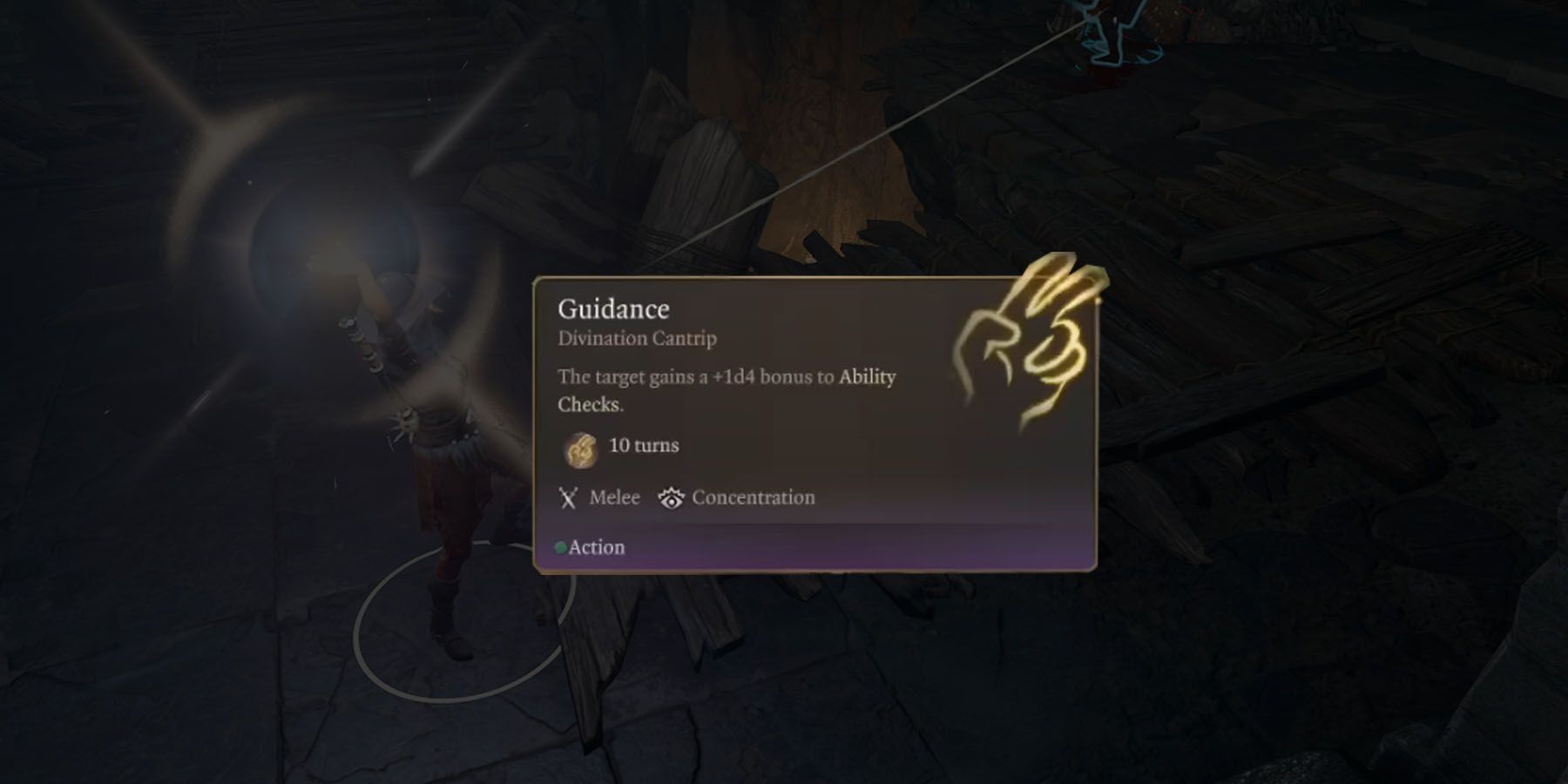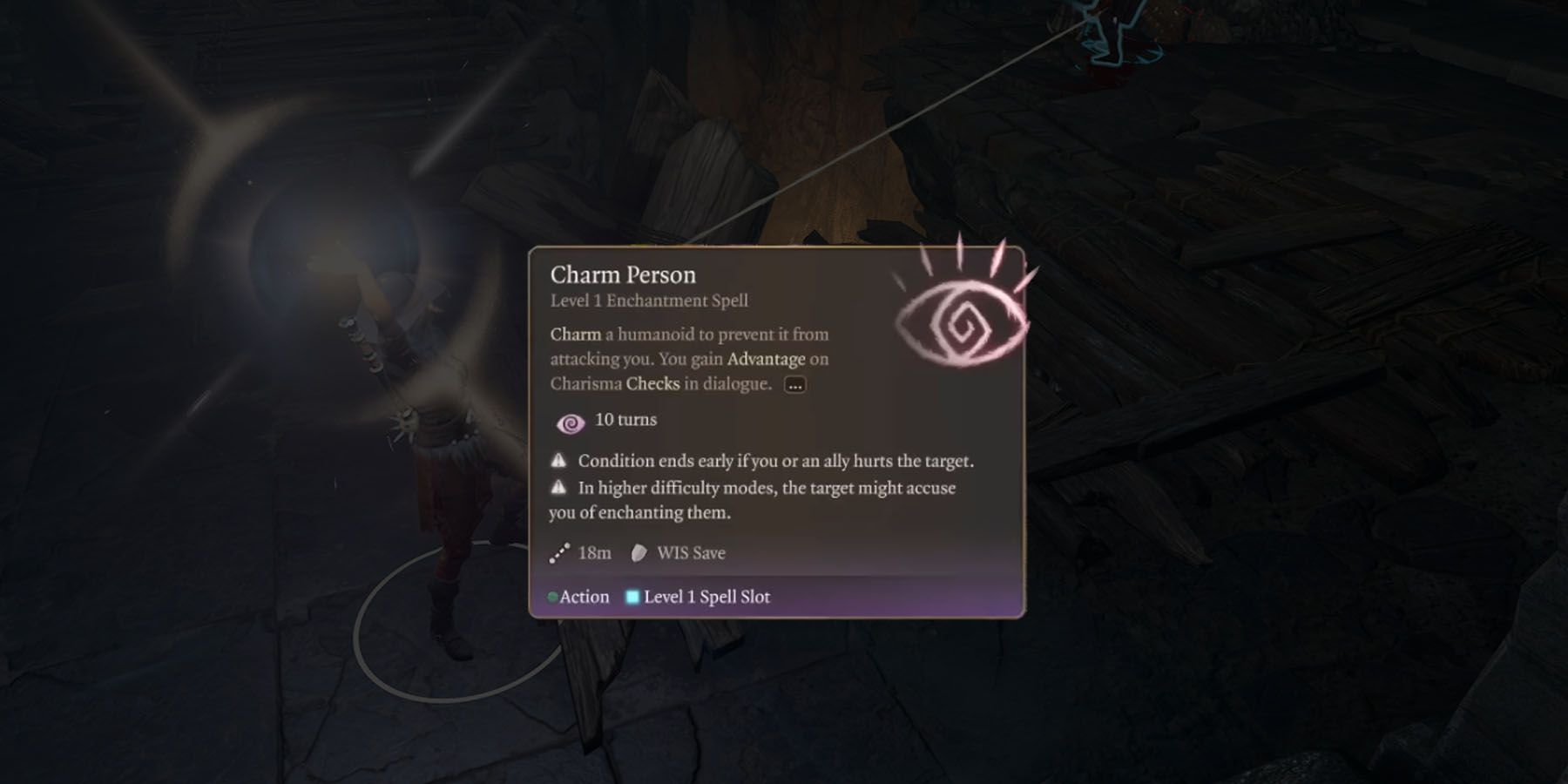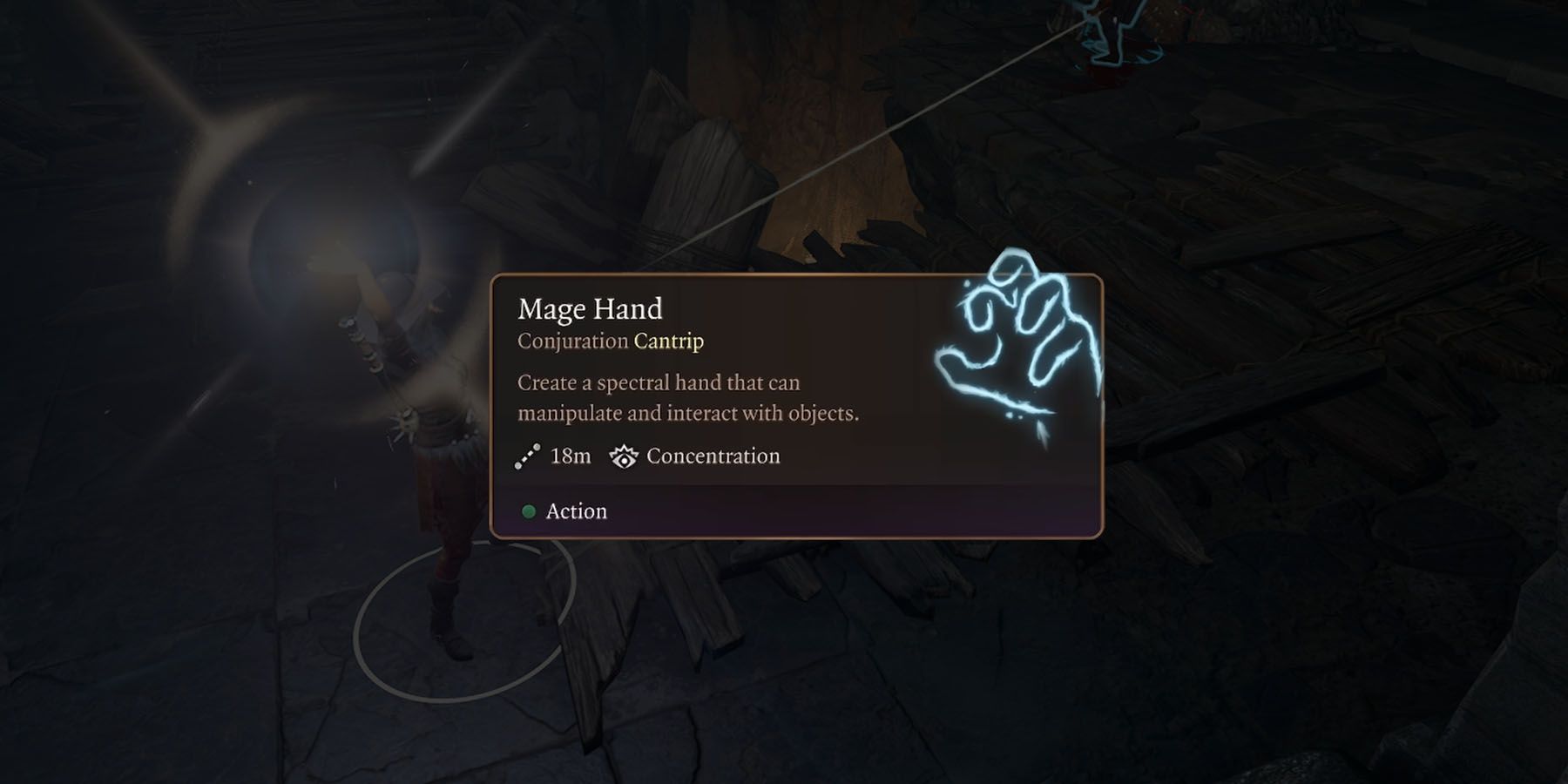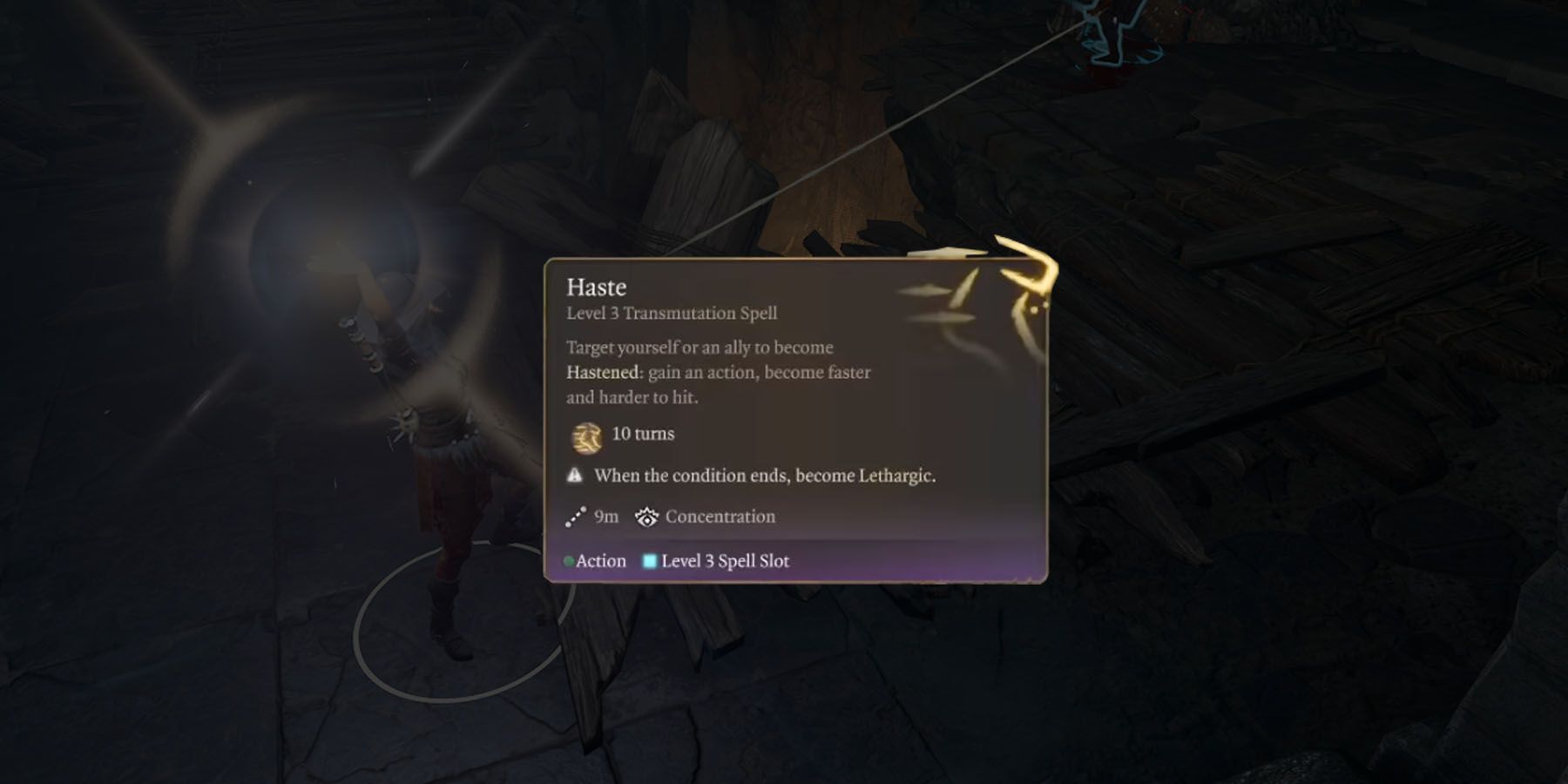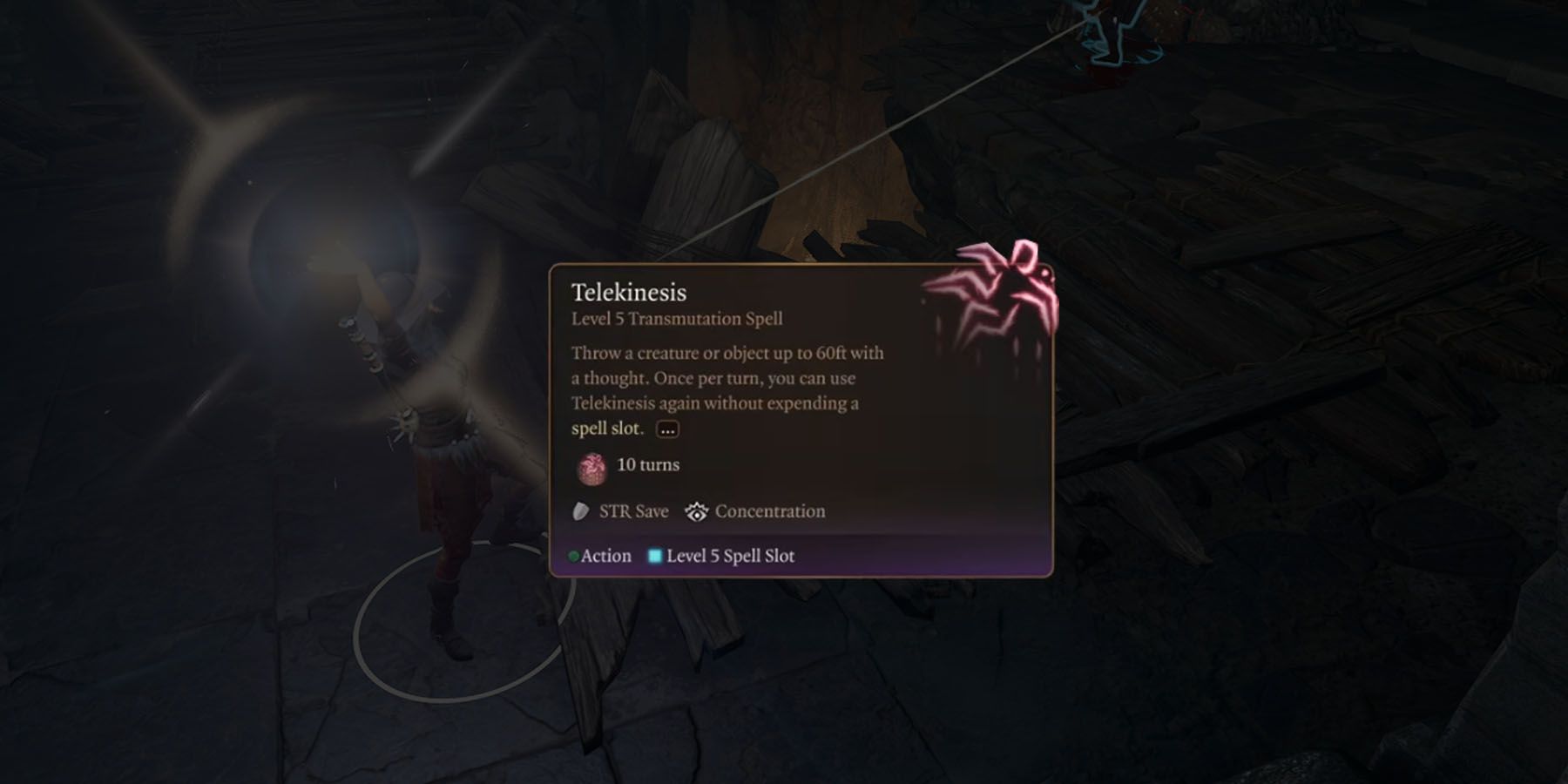When it comes to a tactical RPG like Baldur’s Gate 3, players who use spellcasters expect them to pack a lot of punch to end combat encounters quickly. However, the fragile nature of mages and the rather vague descriptions of some spells make using them extra challenging for newcomers to this Dungeons & Dragons adaptation. This vagueness is on purpose, however, as Larian Studios wants players to experiment with the potential of their spells.
In Baldur’s Gate 3, spells can be used offensively, defensively, and even creatively depending on the situation. A handy teleportation spell outside combat could bring characters to safety at the first sign of danger. Not to mention, transforming into a puff of gas is useful in entering small spaces but can also be a great way to bypass enemy guards. Here are some of the best utility spells players should use in the game.
10 Dimension Door (4th-Level Conjuration)
In cases of extreme emergencies, players enjoying their Baldur’s Gate 3combat with their character may find themselves in need to escape the encounter fast. Most of the time, this kind of retreat needs multiple turns and the Disengage Action to pull off, oftentimes leading to enemies chasing players and negating the distance covered. With Dimension Door, escaping becomes a guarantee.
Despite the hefty Spell Slot cost, Dimension Door allows a Warlock and a medium-or-smaller-sized ally to teleport to a space they can see. Theoretically, this can take the Warlock and their companion so far from battle that they’re moments away from full disengagement. Since turn-based combat “stops” time for characters still taking their turn, the retreated Warlock and their companion could take time to recover before getting the jump on enemies once more.
9 Produce Flame (Conjuration Cantrip)
When players explore dungeons in their Baldur’s Gate 3 gameplay, they’re expected to bring a light source as the lack of illumination not only blocks their surroundings but also removes points of interest out of sight. If a player’s character doesn’t have Darkvision, they may be compelled to cast a multitude of illuminating spells. Among these, however, perhaps Produce Flame (Conjuration Cantrip) is the most useful.
Casting Produce Flame will release a flickering flame on the player’s hand that can stay there for as long as players need. This flickering fire will illuminate everything within a nine-meter radius, which is a decent-enough distance for a light source. Not only that, this is the only illuminating spell that can be thrown for 1d8 Fire Damage.
8 Wind Walk (6th-Level Transmutation)
One of the best themes associated with the Druid in Baldur’s Gate 3 is their connection with nature, making them one of the most visually-unique Classes in terms of both aesthetic and choice of spells. At higher levels, Wind Walk represents a Druid’s mastery over the elements, and how they can impart this mastery upon their allies.
Thanks to Wind Walk, the Druid and all nearby allies become tiny clouds of mist. Until their long rest, the players’ gaseous forms can’t talk, attack, and cast spells. Aside from being a nifty feature to escape enemies, Wind Walk can let clusters of players go through small spaces or even bypass enemy-filled territory unharmed.
7 Gaseous Form (3rd-Level Transmutation)
Size matters in a game like Baldur’s Gate 3, and not only for the adult scenes. With the game adapting D&D rules, the Baldur’s Gate title also lets players become Dwarves, Halflings, and Gnomes. However, these races don’t just possess smaller statures for the sake of aesthetics. In fact, the D&D-based game has various areas where only smaller-sized beings can fit.
Players who want to explore the other races in the game may be disappointed when encountering these locations, especially if they don’t have a Familiar that can fit small holes while exploring. Thanks to Gaseous Form, a target becomes a gas cloud that can’t talk, attack, or cast spells until the caster’s concentration ends. Aside from being an exploration tool, Gaseous Form can become a useful tool in getting out of situations.
6 Fly (3rd-Level Transmutation)
Aside from being outnumbered most of the time, players trying to win Baldur’s Gate 3 encounters face the trouble of lacking mobility to reposition characters away from opponents. With foes close to characters able to use Opportunity Attacks should they try moving away, some characters in melee end up being stuck in precarious situations. Thanks to Fly, a spellcaster or their ally can have the convenience of repositioning across a huge distance.
While Fly comes at a hefty cost, players need to remember that this spell lets players cover large distances both horizontally and vertically. This allows spellcasters or their chosen allies to land on more efficient vantage points to cast spells and launch attacks. Moreover, the 10-turn duration of Fly beats multiple casts of the much-cheaper Misty Step.
5 Guidance (Divination Cantrip)
A Bard is one of the most popular Dungeons & Dragons Class courtesy of Bardic Inspiration, a bonus that provides a character with an extra dice to roll a bonus on specific rolls. Without a Bard, players enjoying their Baldur’s Gate 3 gameplay may find it more difficult to win checks, but Guidance can make these much easier to accomplish if players have a Cleric in their party.
With Guidance, the target now gets a +1d4 to Ability Checks. This bonus might not be much at first, but its ability to affect almost any roll its target can accomplish makes this an equivalent of a weaker Bardic Inspiration. When combined with other bonuses, Guidance can transform a character into a powerhouse even in Skills they’re not proficient in or when attacking up-close with Versatile Weapons.
4 Charm Person (1st-Level Enchantment)
In an RPG like Baldur’s Gate 3 where the wrong dialogue can result in conflict, a spell like Charm Person can be an efficient way of securing friendly conversations. At its core, using this spell gives the caster Advantage on Charisma Checks, with hostile enemies having Advantage on Saves against this effect.
Most of the time, Charm Person is helpful in dialogue where players need a much-appreciated buff, especially when trying to convince another person against doing something. Despite its status as a 1st-Level Spell, its impact in potentially avoiding catastrophic encounters makes it a must-have spell.
3 Mage Hand (Conjuration Cantrip)
Ever the reliable spellcaster companion, the Mage Hand (Conjuration Cantrip) in Baldur’s Gate 3 gameplay serves as a nifty substitute to the Telekinesis skill in Divinity: Original Sin 2, fitting the role of a unique method of interacting with objects from afar. This benefit makes the Mage Hand quite suited for scouting areas and interacting with unfamiliar objects, so players can avoid traps.
As a Familiar, Mage Hand can be imbued with buffs such as Invisibility, allowing it to stealthily approach objects. Players can also get more complex and throw a bottle of oil or damaging gas at enemies via Mage Hand to avoid aggression.
2 Haste (3rd-Level Transmutation)
Save for the Fighter’s Action Surge, there aren’t other D&D Classes who possess the ability to get another Action during their turn. Thanks to Haste, spellcasters can spend a hefty 3rd-Level Spell Slot to grant themselves or another ally the ability to get another Action for 10 turns before experiencing Lethargy after. Despite the setbacks that Lethargy brings, 10 turns of double Actions should give the heavy-hitters of the team enough time to make quick work of enemies.
The best users of Haste are Sorcerers who can use Metamagic: Twinned Spell to make a targeting spell affect two users. As of Patch 9, Haste now doubles the Cantrips cast or doubles the Extra Attacks a Hastened character can unleash per turn.
1 Telekinesis (5th-Level Transmutation)
Among Divinity: Original Sin 2 spells, Telekinesis is notable not just for being able to reposition and throw objects, but also in its ability to transport creatures in various locations. In Baldur’s Gate 3 gameplay, Telekinesis provides the same functionality, albeit becoming the more aggressive version of Mage Hand.
Unlike Mage Hand, Telekinesis can throw both an object or a creature up to 18 meters. Despite its hefty 5th Level Spell Slot cost, just a one-time use of Telekinesis grants casters the ability to use it once per turn without any costs to their resources. Telekinesis paired with a high surface can wreak havoc to enemy ranks.
Baldur’s Gate 3 is available now on PC and is expected to release on September 6th for PlayStation 5.

